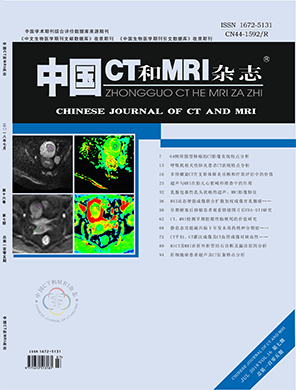Head and Neck Imaging
MSCT and MRI in the Diagnosis of Extrahepatic Bile Duct Stones and Analysis of Missed Diagnosis Reasons
Author:LIU Zhao-yang, SONG Zhao-yang, WEI Tao,et al.
affiliation:Department of Liver Diseases Branch, the Fifth People's Hospital of Anyang City, Anyang 455000, Henan Province, China
PDFAbstract
Objective To explore the application value of multi-slice spiral CT (MSCT) and magnetic resonance imaging (MRI) in the diagnosis of extrahepatic bile duct stones and to analyze the reasons for the missed diagnosis. Methods The clinical data of 120 patients with suspected extrahepatic bile duct stones who underwent MSCT, MRI, and MRCP examinations at the same time within 2 weeks before ERCP were retrospectively analyzed in our hospital. Diagnostic values of MSCT and MRI were compared, and the features of missed diagnosis of MSCT and MRI were analyzed. Results The sensitivity and negative predictive value of MRI were higher than those of MSCT in the diagnosis of extrahepatic bile duct stones while the missed diagnosis rate was lower than that of MSCT (P<0.05). MSCT: The missed diagnosis rate of stones with density<40 HU was significantly higher than that of stones with density of 40HU-60HU and>60HU (P<0.05). The missed diagnosis rate of stones<0.5cm in the 40HU-60HU group was significantly higher than that of stones with 0.5-1.0cm and >1.0cm (P<0.05). In density>60HU group, there was no statistically significant difference in the missed diagnosis rates of stones<0.5cm, 0.5-1.0cm and >1.0cm (P>0.05). There was no significant difference in the missed diagnosis rate of patients with bile duct dilatation or without bile duct dilatation between the 40HU-60HU group and the density>60HU group (P>0.05). MRI: The missed diagnosis rate of muddy stones was significantly higher than that of<5mm stones and>5cm stones (P<0.05). The rate of missed diagnosis in patients without extrahepatic bile duct dilation was significantly higher than that in patients with extrahepatic bile duct dilatation (P<0.05). Conclusion Patients with clinically suspected extrahepatic bile duct stones should prefer MRI if conditions permit. The diagnosis of extrahepatic bile duct stones by MSCT and MRI is influenced by multiple factors, such as the size and location of stones and common bile duct dilatation.
【Keyword】MSCT; MRI; Extrahepatic Bile Duct Stones; Diagnosis Value; Missed Diagnosis Reasons
【Chart number】R575.7
【Document Identification Number】A
【DOI】10.3969/j.issn.1672-5131.2018.07.027
Chinese journal of CT and MRI
th16Volume, th 7 Issue
2018Year07Month

Related articles